Introduction
Types of child abuse:
- physical;
- psychological;
- sexual;
- neglect.
Child abuse should be defined as deliberate, repetitive actions of one family member or more towards the child that lead to the impaired health of the child or creates conditions that prevent his or her optimal development as an individual.
Child abuse can take different forms: physical, psychological, sexual. Neglecting a child is also considered a type of abusing and implies any negligence regarding the physical and emotional state of the child. Moreover, an improper behavior of parents, which leads to child delinquency, should be considered as indirect neglecting (Davies & Lyon, 2013).
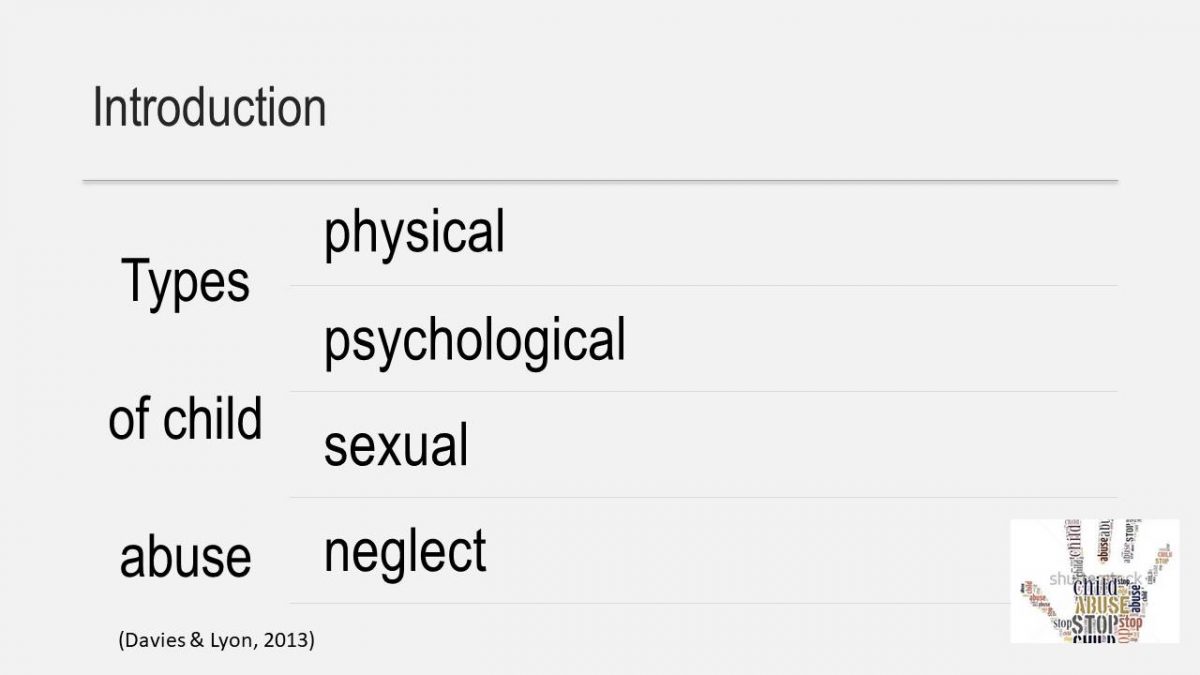
Aspects
Children up to 18 years should be considered as victims if they are subject to one or more forms of abuse.
In the family environment, parents, guardians, adoptive or foster parents, as well as other family members (brothers, sisters, grandparents, aunts and uncles), can be considered as abusers. Whereas children up to 18 years should be considered as victims if they are subject to one or more forms of abuse.
In addition, any type of violence can be characterized by varying degrees of child involvement in the abusive acts: direct involvement in aggressive actions on the part of others; direct engagement in the manipulation (to establish control over the adult victim, frequently the child’s mother); indirect involvement as a witness of violence against other family members (Davies & Lyon, 2013).
Child abuse should be perceived as a form of deviant behavior to which researchers give different explanations: biological, psychological, socio-cultural. In order to understand the situation in the society at the moment, and outline the trend of its improvement, it is crucial to analyze the statistics of domestic violence over the last years.
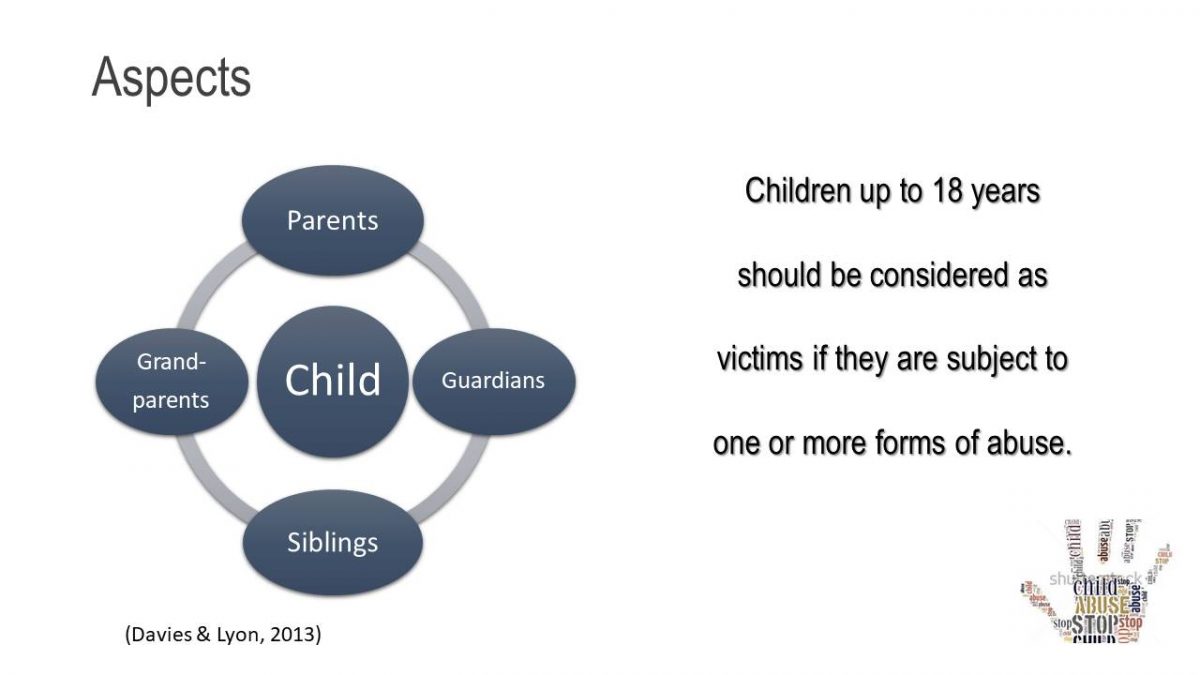
General Statistics
According to Children’s Bureau (2015), “over the past 10 years, more than 20,000 American children are believed to have been killed in their own homes by family members”.
The recent figures from Children’s Defense Fund’s Annual State of America’s Children (2014) announced that 1,825 children are abused or neglected each day in the U.S.
The statistics present that “the rate of child mortality as a consequence of abuse is four times the number of US soldiers killed in Iraq and Afghanistan” (Children Bureau, 2015). Millions of children have fallen victim to domestic violence and negligence. The rates of negligence are high, as well. The data are horrifying and the situation requires the immediate reaction from the government, social institutions, and the society, while it proves that the existing legal procedures of violence prevention do not function sufficiently.
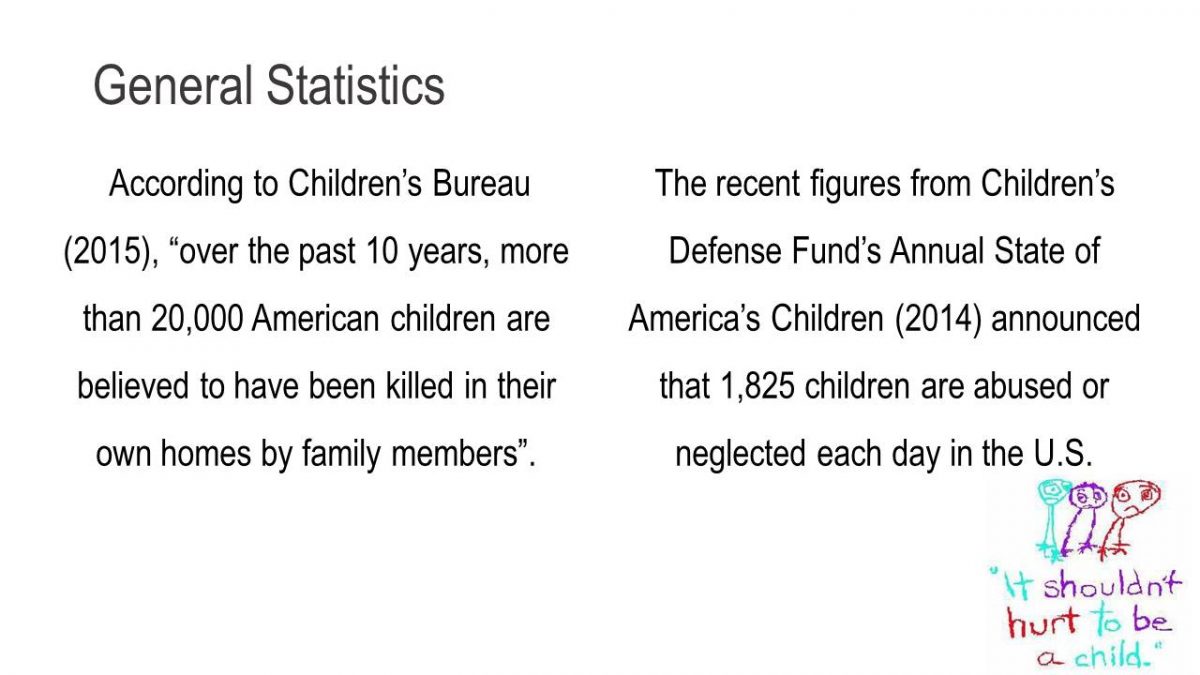
General Statistics (Children Bureau, 2013)
“Children are suffering from a hidden epidemic of child abuse and neglect. Last year, 3.6 million reports of child abuse and neglect were reported to state and local agencies in the United States involving 6.6 million children. The United States has one of the worst records among industrialized nations – losing more than four children on average every day to child abuse and neglect” (Children Bureau, 2013).
The diagram shows data from 51 states since 2010–2011, and 52 states since 2012–2014 accordingly. It is evident that the rate of victimization has started to grow in several age groups since 2014.
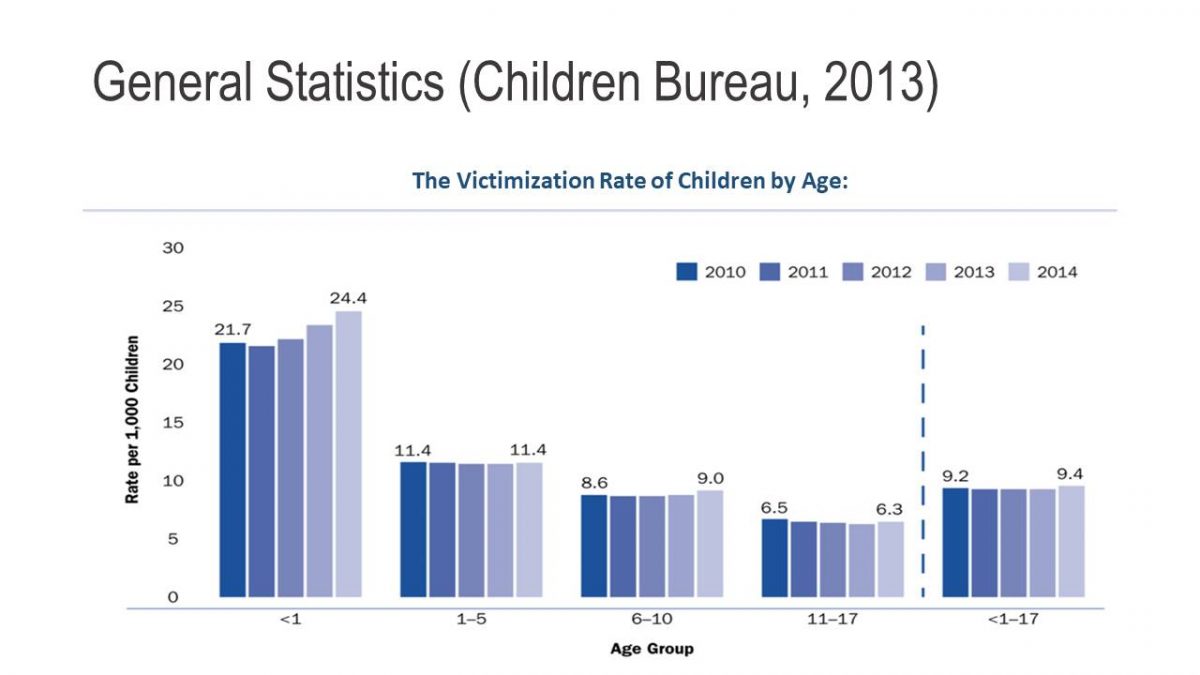
California: Relationship of Alleged Offender to Child
According to the data collected during January – June 2015 the average age of alleged offenders is 18+.
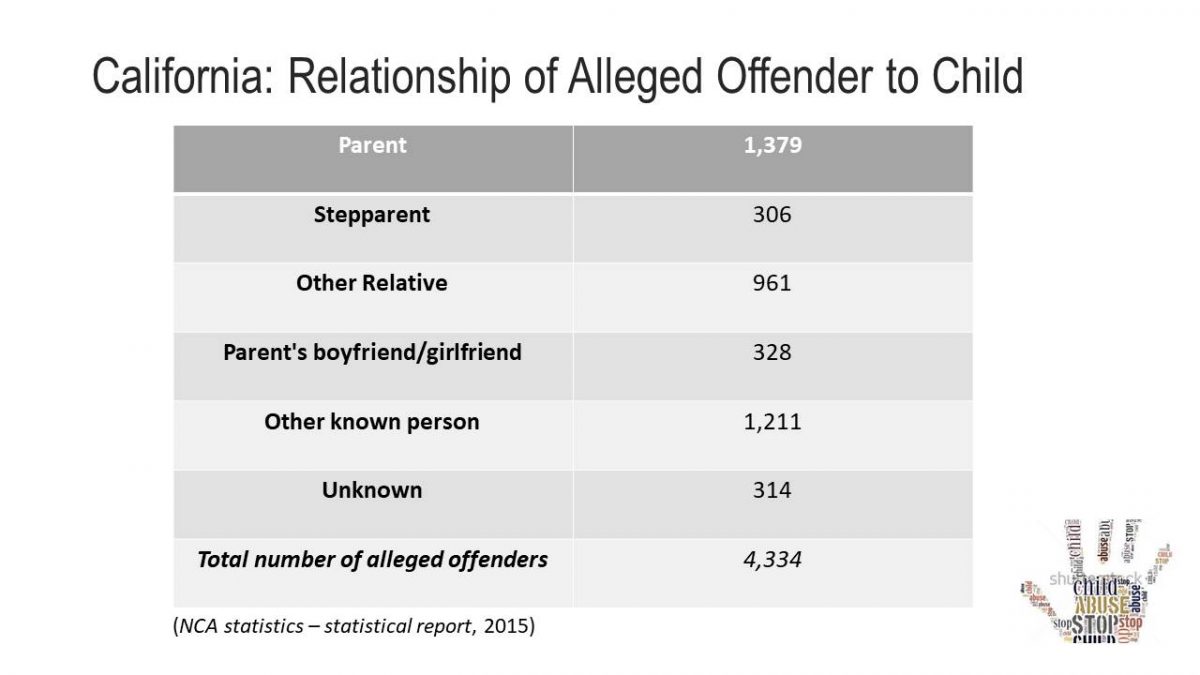
California: Types of Abuse
The dominant types of violence in California are sexual and physical abuse. However, due to the integrative nature of violence, it can be stated that all the victims have endured psychological abuse, as well. All participants of the data collection have received a medical examination or treatment and continue receiving counseling therapy until the present moment.
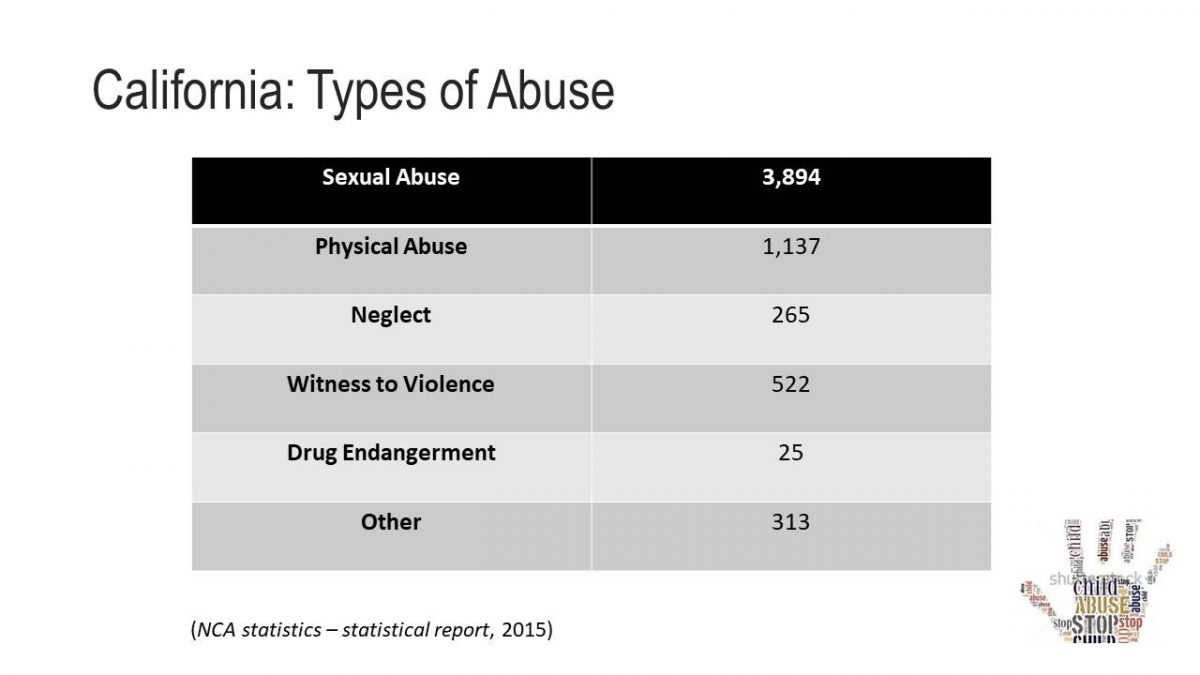
Child Abuse Across the Country
- 116,940 victims were ages 0 to 6 years
- 115,959 victims were ages 7 to 12 years
- 81,025 victims were ages 13 to 18 years
- 205,438 children reported sexual abuse
- 60,897 children reported physical abuse
- 211,831 children participated in on-site forensic interviewing at a Children’s Advocacy Center
The data were collected from 315,000 interviewees around the country in 2014. The publicity in terms of domestic violence rates should increase the society’s awareness about the possible risk groups.
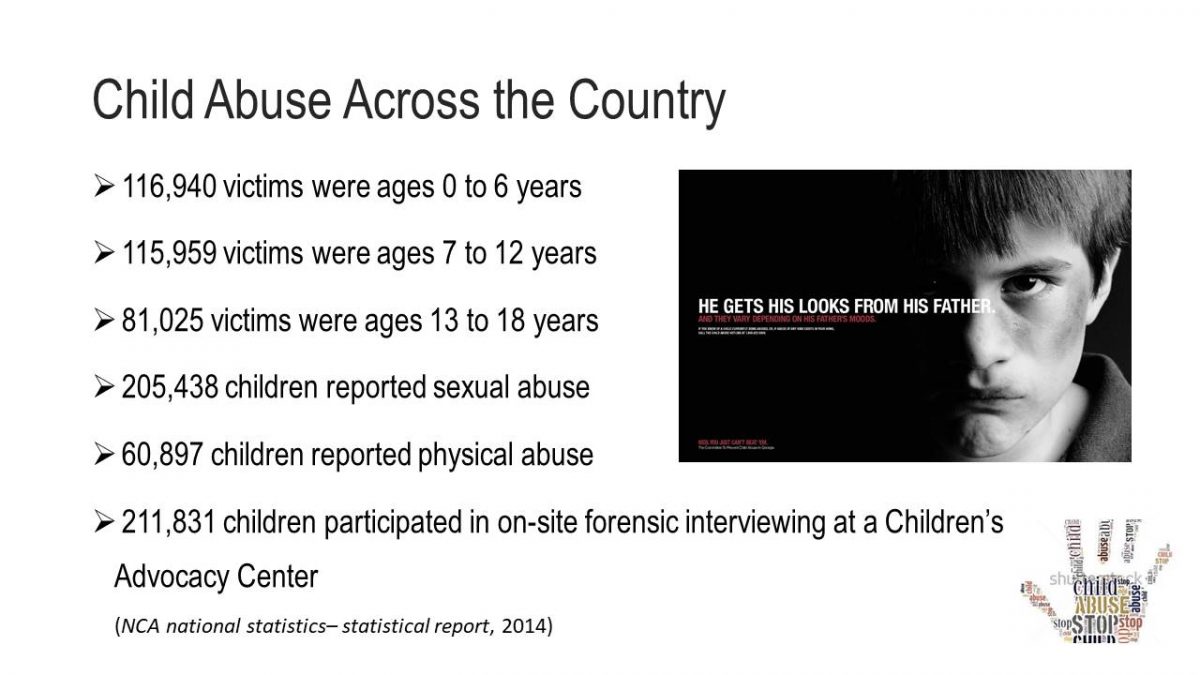
Alleged Offenders Across the Country
- 154,529 were 18+ years old
- 26,294 were ages 13 to 17 years
- 20,040 were under age 13 years
- 95,913 were a parent or step-parent of the child
- 127,358 were related to the child
- 23,696 were an unrelated person that the child knew
According to the data, the highest percentage of child abuse in America has been performed by people related to the child but not their parents. This conclusion refutes data on the prevalence of parental violence in the structure of violent crime against children. This conclusion is crucial for proper development and application of corresponding measures of prevention of offenses and crimes committed against minors.
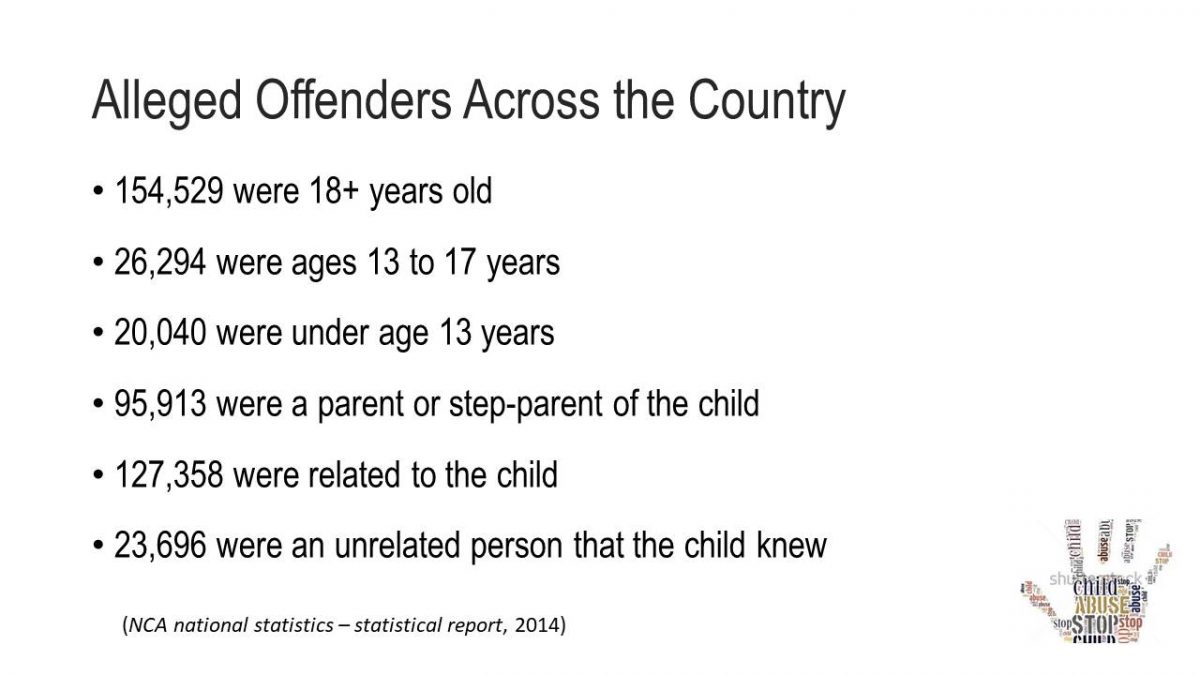
Conclusion
In cases of domestic violence against children, the minors are in constant contact with the abusers and depend on them financially and emotionally, especially when the perpetrator is a parent or a caregiver. In most cases, the victims are not legally able to lead an independent life; thus, the child remains subject to violence throughout years.
Child abuse and neglect prevention require a long-term systematic approach, which includes the introduction and implementation of the relevant laws.
Educating professionals and the community regarding safety and health improvement will ensure the successful socialization of the victim after the endured abuse.
Publicity will gradually change the victims’ perception of themselves, which is especially important when the legal system is unable to respond adequately to domestic violence.
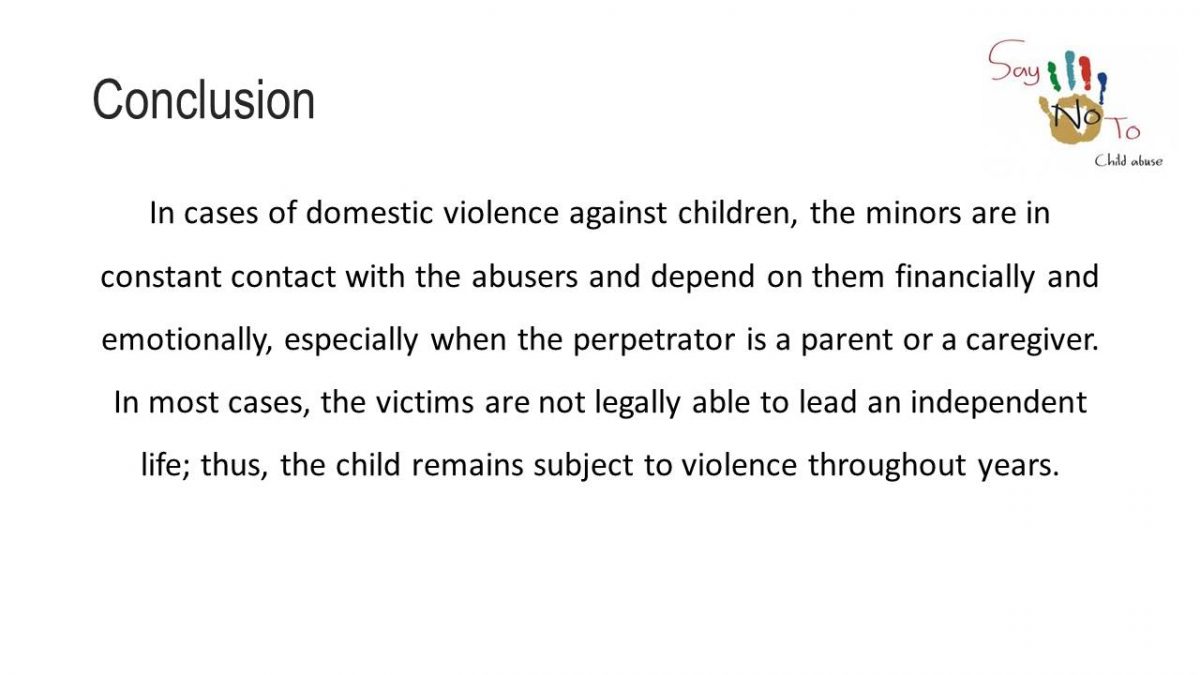
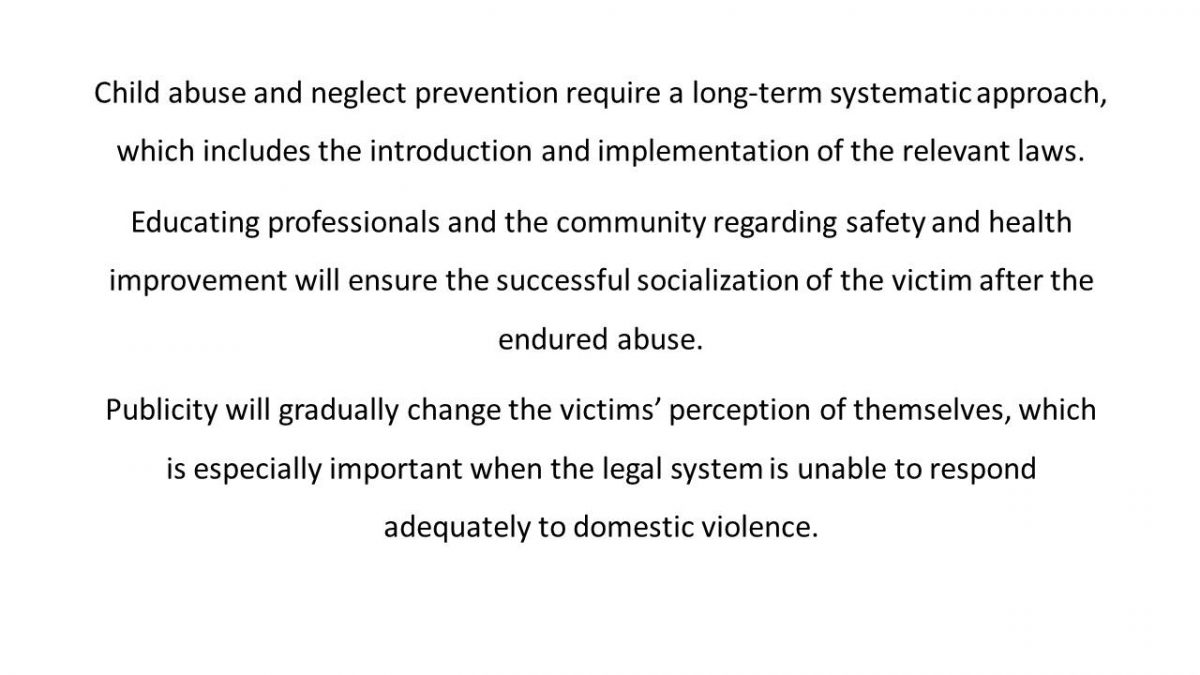
References
Children’s Bureau. (2015).Child maltreatment 2013. Web.
Children’s Defense Fund. (2014). The state of America’s children.Web.
Davies, J., & Lyon, E. (2013). Domestic violence advocacy: Complex lives/difficult choices. Thousand Oaks, CA: SAGE.
NCA national statistics – statistical report. (2014). Web.
NCA statistics – statistical report. (2015). Web.